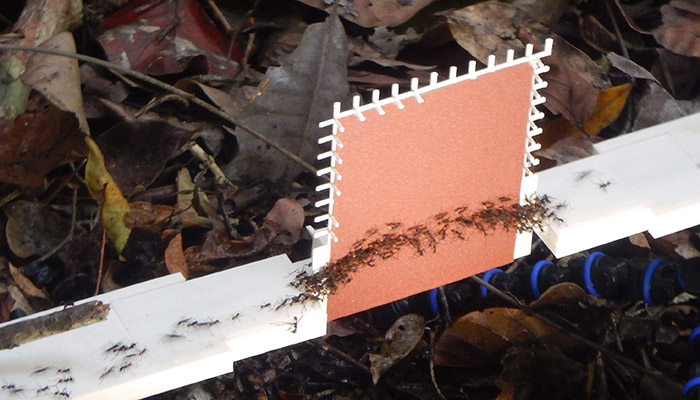Army ants (Eciton burchellii) are known for their vast foraging raids, where hundreds of thousands of ants flow like a river from their nest site, scouring the jungle for prey. To ensure their traffic flows efficiently, they construct highways and bridges along the rough forest floor, built entirely out of worker ants that join their bodies together. Researchers have now described a new type of self-assembled structure called ‘scaffolds’.

Army ants can join their bodies together to build megastructures that are useful to the colony, and an international team of researchers has discovered a new type of structure - called 'scaffolds'.
In a study published in Proceedings of the National Academy of Sciences of the USA, the team of authors from the Max Planck Institute of Animal Behaviour, Macquarie University, New Jersey Institute of Technology and the Santa Fe Institute show that scaffolds act like a safety net to prevent walking ants from slipping and falling when the foraging trail runs along steep ground.
The researchers stalked the forests of Panama to find foraging swarms of army ants, and redirected their traffic trails along a platform that could tip between 20 and 90 degrees from horizontal.
“We show that scaffolds rarely form on slopes less than 40 degrees, while steeper inclines generate faster-growing and more massive structures. Scaffolds are also more likely to form when trails are transporting a large number of workers carrying heavy prey items,” says co-lead author Dr Matthew Lutz from the Max Planck Institute of Animal Behaviour.
Army ants are small, blind and have no leaders or blueprints to direct them, yet their ability to generate sophisticated group-level behaviour from simple local-level rules is extremely valuable to many engineering fields, including swarm robotics.
“Once the scaffolds are in place, the number of falling ants drops to near zero, even when the ants are forced to traverse across completely vertical slopes.”
The authors present a theoretical model for scaffold construction that centres around a very simple mechanism – ants can sense how much they are slipping, and are more likely to join scaffolds when their rate of slipping is high.
“Our model closely matches the experimental results, without requiring the ants to communicate with each other or assess the size of the structure,” explains co-lead author Dr Chris Reid from Macquarie University's Department of Biological Sciences.
“Army ants are small, blind and have no leaders or blueprints to direct them, yet their ability to generate sophisticated group-level behaviour from simple local-level rules is extremely valuable to many engineering fields, including swarm robotics.”